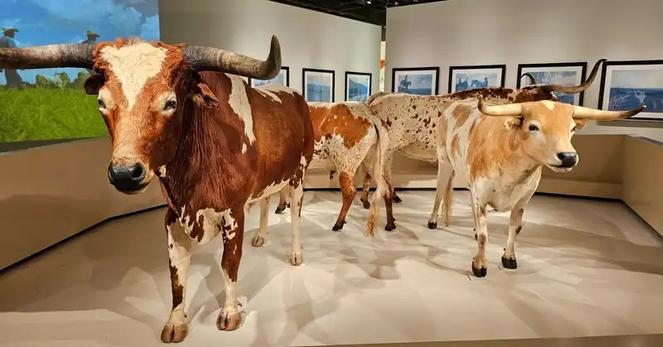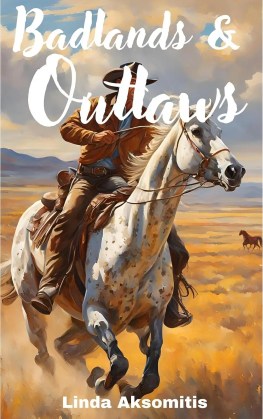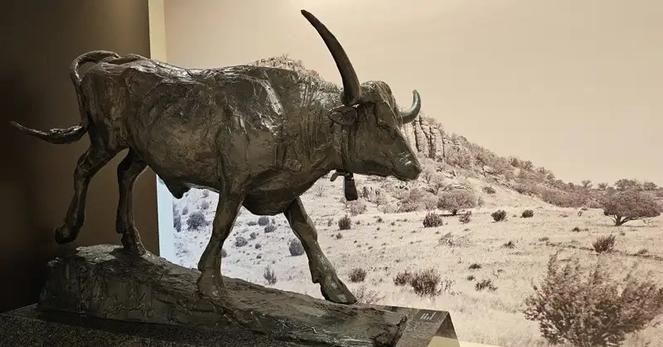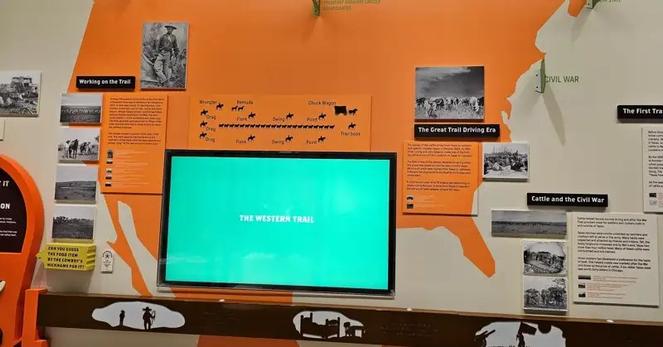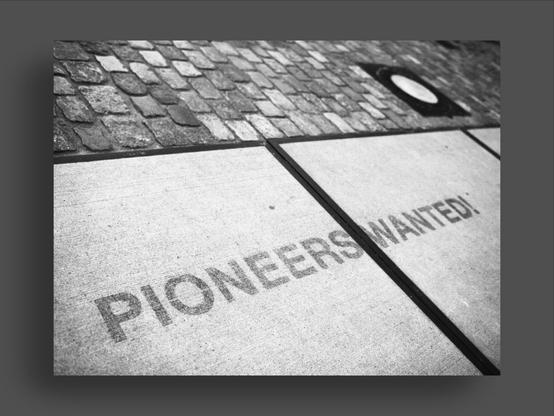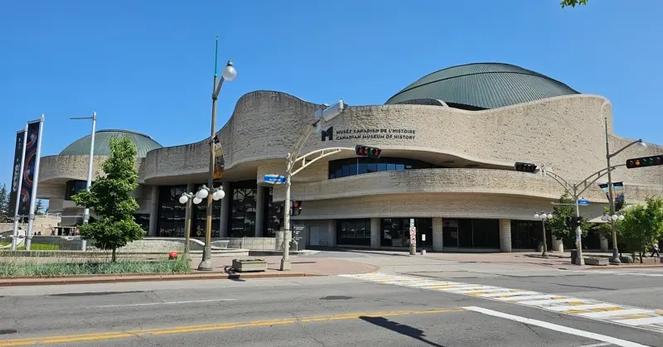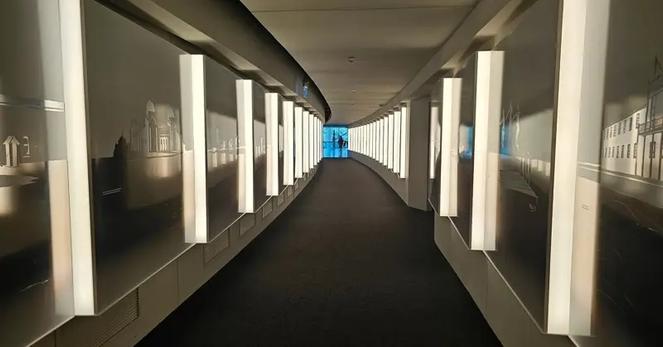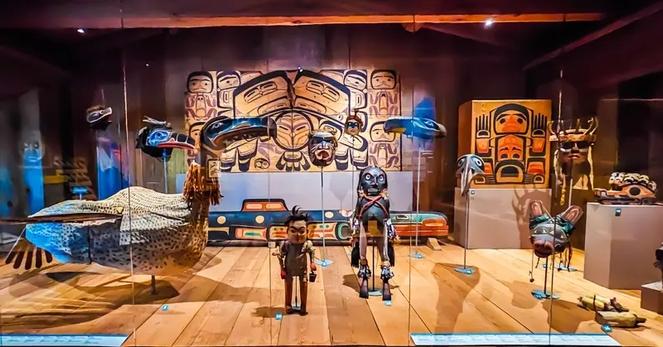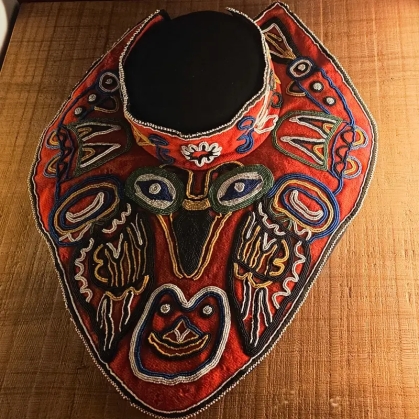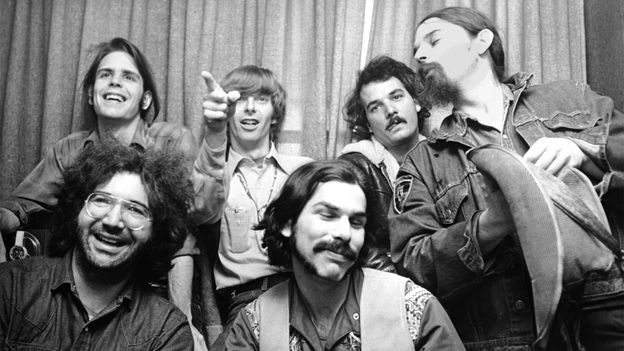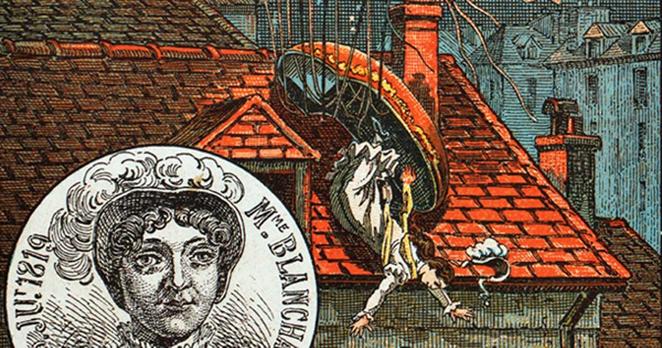Inside the Cattle Raisers Museum: Fort Worth, Texas
Visit Fort Worth, Texas, to explore all aspects of raising cattle in the Southwest United States. The Cattle Raisers Museum, located in Fort Worth’s Cultural District, shows how cattle ranching shaped the economy, culture, and landscapes of Texas and at least 20 other states.
Longhorn cattle display in the Cattle Raisers Museum in Fort Worth, Texas. Photo by Linda Aksomitis.Linda’s Pick of the Exhibits
I lived on a cattle ranch for many years — in fact, a few of my books for YA readers are about driving cattle in the old west.
Buy Amazon audiobook or ebook.So, I found all the history interesting — but the I’m in What display jumped out as my favorite.
It was full of fascinating pieces of information!
Beef at the grocery store, of course, is the main thing we get from cattle.
Its essential nutrients include protein, iron, B-vitamins and others.
More than 2/3 of beef at the store meet government guidelines for lean.
However, there’s a lot more as I learned. Uses can be edible by-products or inedible by-products or medical by-products. How many by-product uses can you name?
What are some important by-products of beef?Beef by-products are found in hospitals and drug stores. Where? Collagen from beef hides is used in medical applications for such things as wound dressings, burn ointments, surgical sutures, and tissue regeneration. Ground beef-derived materials are also used for biomedical research, dental fillings, and some orthopedic products like bone screws. Wow! Who knew?
As well, medical by-products include more than 100 individual drugs!
Got allergies or are diabetic? Insulin, vaccines, and allergy medications have traditionally used beef by-products. Indeed, it takes the pancreases from 26 cattle to provide enough insulin to keep one diabetic person alive for a year.
Beef by-products are also used in firecrackers! Indeed, beef collagen-based casings or binders can replace or supplement traditional materials like white clay or paper tubes. Why? They provide moisture resistance and durability, so they protect the firecracker’s explosive powders until ignition.
When you’re washing your face, you may be using another important beef by-product. It’s called beef tallow, which is rendered from beef fat. This ingredient moisturizes and nourishes the skin with natural vitamins like A, D, E, and K. It also contains natural antimicrobial and antibacterial properties that reduce skin irritation and promote clearer skin.
Beef fats yield oleo stock and oleo oil used for margarine and shortening. Oleo stearin is used in making chewing gum and some candies.
Gelatin produced from bones and skins is used in marshmallows, ice cream, canned meats, and gelatin desserts!
And here are a few more uses:
- Stearick acid, used in making rubber for tires that are more durable, is derived from beef tallow
- Beef tallow contributes to producing lubricants found in hydraulic brake fluids and antifreeze
- Beef tallow is converted into sodium tallowate and used in many traditional laundry soaps and detergents
- Leather from the hide of cattle is used to make many types of sporting goods from footballs to ball gloves
- Collagen is used in various sports strings and bindings, like tennis racket strings and bowstrings, due to their strong and flexible properties
- Products such as adhesives and greases derived from beef fat may be used in equipment maintenance or assembly
- Camel hair artists’ brushes are actually made from the fine hair found in the ears and tails of beef cattle
- Bones, horns, and hooves are used to produce buttons, bone china, piano keys, glues, fertilizer, gelatin for photographic film, paper, wallpaper, sandpaper, combs, toothbrushes and violin string
How many uses did you list? This is just a starter list, so you may have found lots of the additional ones listed on this PDF from Iowa State Extension and Outreach.
Bronze statue called Old Blue, 1995, by George Carlson. Gift to the museum from Anne W. Marion. Photo by Linda Aksomitis.What’s in the Cattle Raisers Museum?
The Cattle Raisers Museum occupies around 10,000 square feet. It’s located on the second floor of the Fort Worth Museum of Science and History in the Cultural District.
Fast Fact: Four out of every five people in the Southwest U.S. live in cities occupying 15% of the land. Of the remaining 85% of land in Texas, New Mexico, and Oklahoma, more than half is used for raising nearly 18 million cattle. ~ Cattle Raisers MuseumVisitors explore history in three main chronological sections:
- 1690 to 1890: Origins of Texas ranching and the first cattle drives of the 1850s. This section includes how cattle were introduced by Spanish settlers and era of vaqueros (cowboy or cattle herder)
- 1890 to 1950: The gradual end of raising cattle on the open range due to barbed wire fences, railroads, and Ft. Worth’s transformation into a cattle market and meatpacking center
- 1950 to the present: Modern ranching practices and technologies
There are interactive galleries with video storytelling and holograms that I found very engaging. After all, I haven’t met many animated talking cattle! Artifacts include things like saddles, spurs, western hats, tools, and rare photographs. Floor-to-ceiling informational panels provide tons of information.
The Western Trail information panel in the Cattle Raisers Museum. Photo by Linda Aksomitis.Linda’s Road Trip Tips
When you visit the Cattle Raisers Museum, try to leave enough time to visit the other travel attractions in Fort Worth’s Cultural District.
Pin me!- Four additional world renowned museums including the National Cowgirl Museum & Hall of Fame, Fort Worth Museum of Science and History, Modern Art Museum of Fort Worth, and the Amon Carer Museum of American Art
- Will Rogers Memorial Center: Historic home to the annual Fort Worth Stock Show & Rodeo, as well as other events
- Fort Worth Botanic Garden
- Fort Work Zoo
We did the Cowgirl Museum and the Science and History Museum, which gave us a discount for doing both on the same day.
If you want to rest your feet between visiting the museums, stop at the Exhibit Cafe in the Fort Worth Museum of Science and History. The Texas 2 Step plate was tasty!
Who Should Visit the Cattle Raisers Museum?
The Cattle Raisers Museum will be of interest to anyone involved in ranching or farming, past or present. It’s also a great place to get an understanding of how the cattle industry has impacted the history of the Southwest.
Fast Fact: Ranching and doing cattle drives wasn't just the domain of men in the southwest. For example, in 1873, a widow, Margaret Borland, drove her herd of 2,500 head up the Chisholm Trai from Victoria, Texas, to Kansas. In 1888, Willie Matthews, 19, disguised herself as a boy and worked the trail to Colorado for four months undetected. During the Civil War, small ranches were maintained by the wives and daughers of absent soldiers. ~ Cattle Raisers MuseumWe spent an hour going through the museum, but I was already familiar with a lot of the history. If it’s your first Texas visit or if you know little about ranching, allow at least double that time.
Leonard Stiles Branding Iron Collection — Selected Highlights. Photo by Linda Aksomitis.While there are some fun interactives, kids 10+ will likely find the museum more interesting than younger children.
The museum is wheelchair and handicapped accessible. There are some wheelchairs available for guests on a first-come, first-served basis.
How Do You Visit the Cattle Raisers Museum?
The Cattle Raisers Museum is easy to find in Fort Worth’s Cultural District.
Parking: There's lots of paid parking available in the Cultural District. Closest parking is in the Museum Lot located at the northeast corner of Montgomery Street and Harley Avenue, adjacent to the Fort Worth Museum of Science and History.Street Address: 1600 Gendy Street, Fort Worth, Texas, on the 2nd Floor of the Fort Worth Museum of Science and History.
The museum is open year-round, but you can check days and hours open on the Cattle Raisers Museum website.
Keep up-to-date with what’s happening at the museum with the Cattle Raisers Museum Facebook page.
Take a virtual tour with this Cattle Raisers Museum video on YouTube.
Plan your visit with Google maps.
Pin me!More Texas Museum Reviews
Check out more of our reviews for museums in Texas.
More History Museums
-
Amazing Giant Bison, Beaver, Mammoths & More: Yukon Beringia Museum in Whitehorse
-
Fick Fossil & History Museum: Buffalo Bill to Prehistoric Fish in Oakley, Kansas
-
Ronald Reagan Presidential Library & Museum: Simi Valley, California
-
National Cowgirl Museum & Hall of Fame: Cowgirl history in Fort Worth, Texas
-
Bell Barn Museum: Historic Round Barn in Indian Head, Sskatchewan
-
Texas Seaport Museum: Gulf Coast History in Galveston, Texas
-
Jefferson Historical Museum in Big Cypress Bayou: Jefferson, Texas
-
Mystic Seaport Museum: Historic Seafaring Village in Mystic, Connecticut
-
Range Riders Museum: Old West Lives Again in Miles City, Montana
#cowboys #history #lifestyles #museums #oldWest #pioneers #Texas #travel #US_
Oh, that very photograph was a living part of my inner world as a young boy: visions of daring discoveries and inventions, and the ideal of persisting against the odds and not listening to all those conventional voices around you that say it can't be done. Seeing it here brings back powerful memories.
And yes, you are right, Daniels's image is not just a coincidental record, visually & artistically it stands on its own as a true photograph.
#WrightBrothers #JohnTDaniels #pioneers #DocumentaryPhotography #boyhood
Canadian Museum of History: National Museum in Gatineau, Quebec
The Canadian Museum of History is one of Canada’s most-visited museum attractions. Located on the banks of the Ottawa River, in Gatineau, Quebec, it’s just across from Ottawa’s Parliament Hill. It’s one of three Canadian national museums located outside of Ottawa.
Long curved passageway entrance to the Canadian Hall of History. Photo by Linda Aksomitis. Fast Fact: The Passageway into the Canadian History Hall is lined with 101 backlit silhouettes of familiar Canadian landmarks, symbols, and activities. The shadows created by inset displays and overhead lighting may shift as you walk through, making it feel like you're truly walking through time.Linda’s Pick of the Exhibits
My favorite part of the Canadian Museum of History was the First People’s Hall. Showcasing centuries of history “from time immemorial,” the hall covers approximately 35,000 square feet. That’s a lot of display room!
Display in the First Peoples Hall. Photo by Linda Aksomitis.I love bright and colorful, so the Aboriginal peoples of Canada displays are a perfect fit for me. Many of the displays could be classed as artworks. However, they’re much more than that. They show the cultural diversity of the many groups that are part of Canada’s early history.
Welcome to the First Peoples Hall. “We include Inuit, First Nations and Metis. Together, we have often been called Native. Now we are more often known collectively as Aboriginal. It has been hard to find a common name because we are, in fact, hundreds of distinct peoples. Each of these peoples has its own name, language, ancestral lands and culture.”
~ Canadian Museum of History
The displays in the First Peoples Hall were guided by a pan-Indigenous advisory committee. Indeed, the team included Indigenous scholars, artists, and leaders. This helps ensure authenticity and reflection of their histories and lived experiences.
Three zones make up the Hall:
- Aboriginal Presence: Displays cultural diversity and early settlement.
- An Ancient Bond with the Land: Emphasizes Aboriginal spiritual and ecological connections.
- Arrival of Strangers: Traces the history of European interactions through to modern political rights and cultural resilience.
Displays in the Hall represent groups from across Canada. I discovered everything from Inuit snow goggles to contemporary artworks such as Shelley Niro’s Sky Woman.
Totem Poles
And of course, I also found many examples of totem poles. Located in the Grand Hall, the Canadian Museum of History showcases the largest collection of totem poles in the world.
What was the purpose of totem poles?Totem poles served various purposes for the different Aboriginal groups that carved them. They represent storytelling traditions and carry many levels of meaning.
The poles were often memorials to represent and commemorate ancestry, histories, people and events. Like the dance collars, the totem poles may indicate a family’s lineage, clan membership and crest. So, the totem poles may have served as house or entrance posts.
All groups of Canadian Aboriginal peoples didn’t carve totem poles. Rather, the peoples of the Pacific Northwest made totem poles, usually from Western Red Cedar. This type of tree is straight-grained and easy to carve. Before taking a tree for carving, many coastal First Nations peoples performed a ceremony of gratitude and respect in honor of the tree.
The totem poles in the Grand Hall are displayed in a huge area of natural light along with reconstructed house facades. Often called the “Poles along the Windows” section, it’s an impressive sight!
Totem poles and house facade in the Grand Hall. Photo by Linda Aksomitis.These totem poles are tall! Indeed, they stand 10 to 12 metres (33 to 39 feet) high. The Grand Hall wall height, behind them, is around 15 metres (49 feet).
I found them awe-inspiring!
What’s in the Canadian Museum of History?
The Canadian History Museum is situated on around 9.5 hectares or about 24 acres of land. According to the museum website, the museum spans 93,000 square m (111,227 sq. yards). It’s big!
Canadian Museum of History in Gatineau, Quebec, Canada. Photo by Linda Aksomitis.Actual exhibit space of course is lower, with about 25,000 sq. m (269,000 sq. ft). In fact, it’s the largest museum exhibition area in Canada. The big advantage of having so much space to store artifacts is that the exhibits rotate frequently. So, there’s always something new to see.
In addition to exhibits, the museum includes:
- Restaurants including the Panorama Cafe and Second Cup
- Boutique / gift shop
- 295-seat 3D (formerly IMAX) theatre
- 500-seat performance theatre
Levels & Galleries
The Canadian Museum of History has four levels.
The Lower Level includes the Grand Hall, the First Peoples Hall, Tsimshian Prehistory, First Peoples of the Northwest Coast, and the Canadian Stamp Collection.
Fast Fact: The Canadian Postage Stamp collection begins with the 1851 "Three-Penny Beaver" stamp.Altogether there are over 3,000 stamps in the museum's collection.
That's every postage stamp ever issued in Canada! Pin me! The Canadian Stamp Collection.
Level 2 includes the Main Entrance (Laurier Street), the Canadian Children’s Museum, Special Exhibits, Gift Shop, theatres, and restaurants.
On Levels 3 and 4, you’ll find three galleries. They include:
- Gallery 1: Early Canada – including earliest times to 1763
- Gallery 2: Colonial Canada – covers the period from 1763 to 1914, the start of World War I
- Gallery 3: Modern Canada – includes 1914 to the present day
So what happened in 1763 in Canada? First, you have to consider the political landscape of the time. The British and French had both established colonies in what’s now Eastern Canada. In the West, French and British fur traders paddled up and down the rivers trading European goods with Indigenous trappers.
In other words, there was a lot of competition between the French and the English! And not just in the new world. The competition was worldwide.
It all came to a halt with the Treaty of Paris. This treaty ended the Seven Years’ War global conflict between the Great Powers, who were primarily Great Britain and France. Major battles occurred in Europe, North America, the Caribbean, Africa, and India.
However, in 1763, France officially ceded New France (in Canada) to Britain through the Treaty of Paris. You can learn more in this Canadian Encyclopedia article about The Royal Proclamation of 1763, issued by King George III, to establish the new administrative structure.
The galleries contain a smattering of everything! Models of galleon ships from the 1500s. A 1700s plow that would have been pulled by oxen or horses to break up grasslands for farming. Maternity clothes and children’s toys from the 1950s baby boom.
My favorite toy of the era–a table hockey game! I never had a Mountie suit, but my brothers had lots of toy guns and holsters. Photo by Linda Aksomitis.As you’d expect in one of Canada’s National Museums, the information boards are extremely well done. There are lots of images blown up to wall size to illustrate different periods that make the museum a very visual experience.
Canada on the war front. Photo by Linda Aksomitis.Linda’s Road Trip Tips
The Canadian Museum of History was one of my stops on Ottawa’s Hop On, Hop Off bus. It’s a great way to see the city if you’re visiting without a car during tourist season. I used the two-day pass to get to all but one (it’s not a stop) of the National Museums.
I got to the museum at lunch time, so walked through the Grand Hall across to My Bistro. The Bistro menu had several comfort classics from poutine to burgers. My choice, a Smashed Cheeseburger, had beef, American cheese, lettuce, pickles, and burger sauce. It was tasty!
Burger in My Bistro at the Canadian Museum of History. Photo by Linda Aksomitis.Who Should Visit the Canadian Museum of History?
The Canadian Museum of History is designed to appeal to everyone from the youngest to the oldest. With interactive displays in the Canadian Children’s Museum and rich, immersive galleries throughout, it’s a fascinating place for all visitors to the city.
Visitor Tip: Purchase a one-day or three-day pass for discounted entry into all seven national museums in Ottawa and Gatineau.I spent a couple of hours on my visit, but that barely got me through the museum. So, start with the level you’re most interested in and pace your visit accordingly! Better yet, especially if you’re a local, visit a couple of times.
Pin me!The museum has a full range of amenities, general services, and accessibility accommodations.
In addition to public washrooms with diaper-changing tables on all levels, there’s a private nursing room located on the first level.
Coat checks and lockers are available, so if you’re on your way back to the airport you can store your bags after they’re screened.
Courtesy strollers and wheelchairs are available–just ask at Information.
Accessibility services include wheelchair accessibility from the parking garage and allowing service animals. Elevator buttons are in Braille along with an induction loop system in the CINÉ+ theatre for those using hearing aids.
How Do You Visit the Canadian Museum of History?
The Canadian Museum of History is located alongside the Ottawa River, which forms the border between the cities of Ottawa, Ontario, and Gatineau, Quebec.
Parking: The underground parking garage (Indigo OT-002) is located at 100 Laurier Street in Gatineau. It has around 350 parking spaces, including designated accessible parking spaces. You can also use Uber or Lyft or the Hop On, Hop Off bus. The museum is served by both OC Transpo (Ottawa) and STO (Société de transport de l’Outaouais, Gatineau) transit systems. The nearby dedicated bus stop is “Musée de l’histoire (#2618)”.Street Address: 100 Laurier Street, Gatineau, Québec.
Visit the Canadian Museum of History Website.
Keep up-to-date with what’s happening with the Canadian Museum of History Facebook page.
Take a virtual tour of the museum with this YouTube video from the Canadian Museum of History.
Plan your visit with Google Maps.
Read More Quebec Museum Reviews
Check out all these museum reviews for the Canadian province of Quebec!
Explore More General Museums
-
Canadian Museum of History: National Museum in Gatineau, Quebec
-
Finney County Historical Museum: 150 Years of Garden City, Kansas, History
-
Adams Museum in Deadwood: Where Legends are Larger Than Life
-
Minnesota Discovery Center: Iron Range Mining History Museum
-
Soo Line Historical Museum & Historic Site: Weyburn, Saskatchewan
-
Pioneer Auto Show Museum: Cars & More in Murdo, South Dakota
-
Vilas Historical Museum: Snowmobiles to Paul Bunyan in a Wisconsin Museum
-
Nanaimo Museum: Diverse History of Nanaimo, British Columbia
-
Frontier Gateway Museum: Dinosaur Fossils & Glendive, Montana History
-
Rosebud County Museum: Homesteader History in Forsythe, Montana
Acknowledgments
During my visit to Ottawa, Ontario, I received a national museum pass, and hop on, hop off bus pass, from Ottawa Tourism. I appreciate their support!
#Canada #history #Indigenous #lifestyles #museums #pioneers #travel
This #documentary tells the story of a #Chinese #cemetery in #VictoriaBC that became a #NationalHeritage site. For Chinese #pioneers who died in Canada, Victoria's Chinese Cemetery at #HarlingPoint was a temporary resting place until their bones could be returned home. (Traditional Chinese belief says that the soul of a person who dies in a foreign place wanders lost until their bones are returned home.) This film traces the rich history of the #VancouverIsland cemetery from controversy and neglect to its revival as a #historic site. Told by those closest to it, the story of Harling Point is a metaphor for #Canada , a country still working on making a home for all who live within its borders.
https://www.nfb.ca/film/from_harling_point/
#AsianMastodon #ChineseInBC #CanadianHistory #ChineseCanadian #ChineseDiaspora #ChinesePioneers #ChineseCanadianHistory #History #Canada #Immigrants #CulturalHistory #CulturalDiversity #BritishColumbia #BCHistory #Racism #Resilience
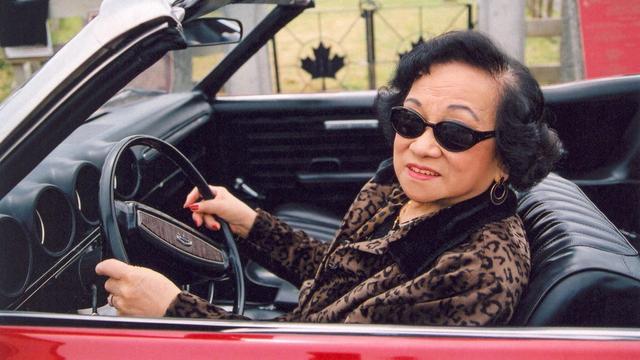
From Harling Point
e.sMILES Podcast #1 – Wir stellen uns vor | eCamper Pioneers - Nachhaltig elektrifiziert.
BBC zum BBS well.com – einer Community vor dem WWW und der Rolle der Band Grateful Dead #pioneers
https://bbc.com/future/article/20250618-how-the-grateful-dead-shaped-social-media
#AncientOrigins #ancient #history #historyfacts #historylovers #historymatters #ancienthistory #archaeology #mythology #Aviation #Pioneers #WomenInHistory

